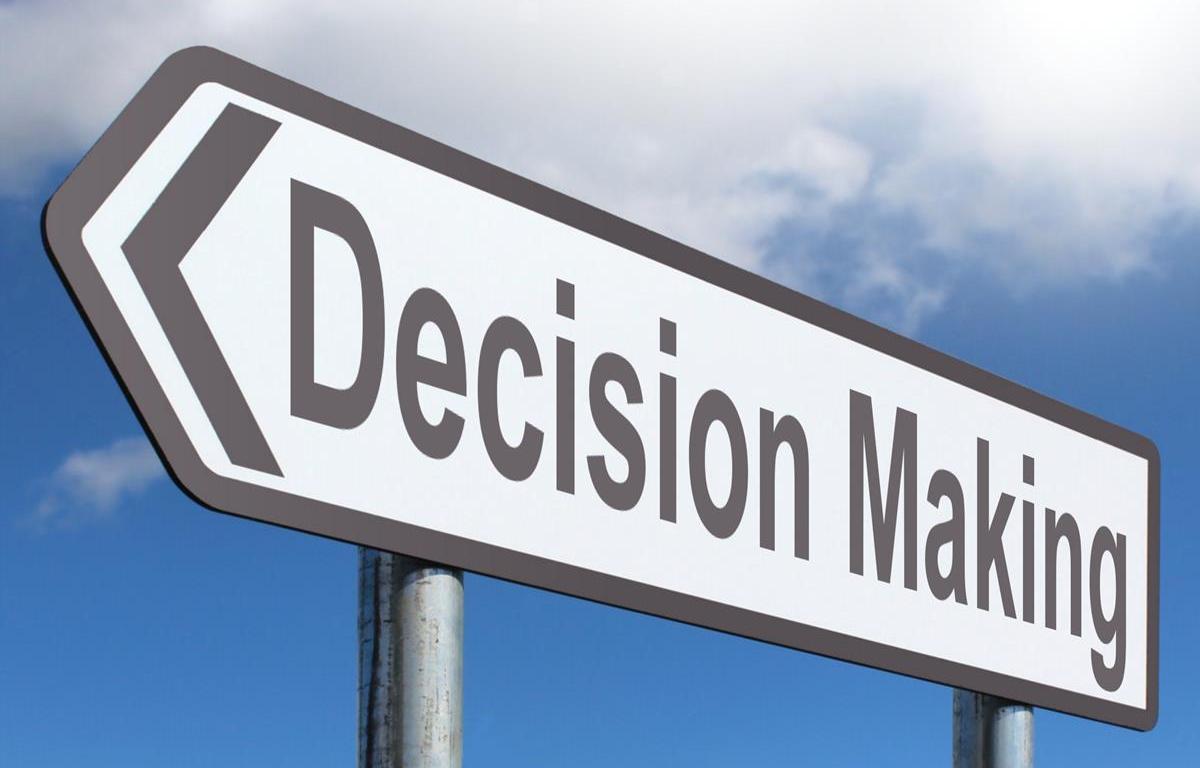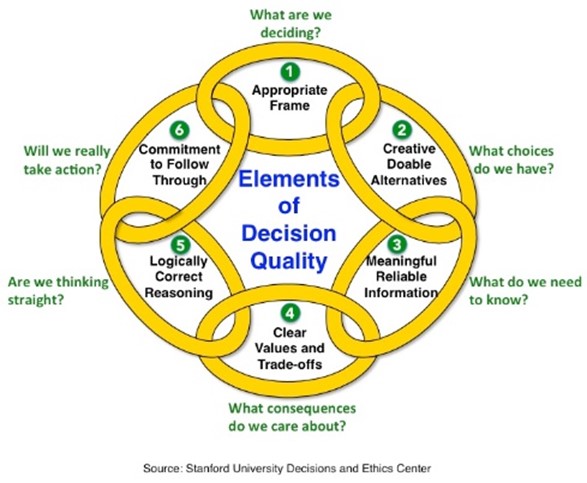Some new language has been creeping in the planning vocabulary in the last year or two: planning & decision making. What used to be planning, or a planning system, is now sometimes referred to as planning & decision making. This is most likely influenced by the acknowledgement of a new category decision intelligence by Gartner, for which they provided a definition since 2022.
I now see LinkedIn profiles calling out ‘better planning, better decisions.’ But is this really true for planners, who spend less than 30% of their time in a decision role and more than 50% of their time in an information role?
Let’s have a look what planning & decision making really means for planners.
What’s a decision?
Let’s start with what a decision is. According to the Oxford dictionary:
‘…a conclusion or resolution reached after consideration’. This implies there needs to be somehuman or other cognition, reasoning, trade off and judgement involved
or
‘…the action or process of deciding something or of resolving a question’. In this definition, one needs to ask him/herself ‘What should I do under these circumstances?’ and provide an answer to it.
Cassy Kozyrkof, chief decision scientist at Google, defines a decision as…’any selection between options by any entity.’ Cassy highlights that there need to be multiple options to choose from and that either human, machine or any other entity can make that choice.
To sum this up, a decision needs options, some considerations, and a choice.
Decision making
According to authors of the book Decision Quality, a decision is only made when resources are irrevocably allocation to the execution of the decision. Without it, multiple planning options, as advanced as they may be, remain calculations, maybe insights, at best recommendations.
Decision making is therefore, taking an action when there are alternatives, or as a human, take responsibility for the action taken by another entity (often a machine).
Decision Quality
If we make decisions, we want to have some decision quality. So, what’s that? According to the book Decision Quality, there are six elements, as per below diagram.
“Decision quality is the quality of a decision at the moment the decision is made, regardless of its outcome.” As per the previous decision definitions, the authors state, that ‘without creative doable alternatives, there is no decision.’ Simple, multiple options are not good enough. The alternatives need to be significantly different for the decision to have any quality.
As the decisions quality is only as good as its weakest link of the six elements, if we consider only slightly different options, the decision quality is near zero.
What this means for planners
According to the Oxford Dictionary, a plan is ‘an intention or decision about what one is going to do.’ This indicates a planning decision is an intent and not necessarily an executional action. This raises some restrictions for quality planning decisions for a planner:
Achieving decision quality: decision quality for a planner can only be achieved if a planner chooses one of multiple significantly different scenarios. If not, the decision quality is very low, not likely a better decision.
Ownership of resources to execute: Without action, a planner doesn’t achieve decision making. Most planners merely own the execution of their own functional plan. So better decisions have a limited scope for most planners.
The decision remains an intent: even if the planner has the authority to make a decision, the planning decision often remains an intent and has no direct business impact. The planner assumes in good faith that his/her plans and alternatives will be executed well by others. A better decision still doesn’t have a direct business impact.
A demand planner can make a decision, by analyzing significantly different forecast algorithms and different internal and external data sources. Based on these significantly different alternatives, the planner chooses the best settings for the forecast. A decision is made, but remains a business intent. Once this new forecast algorithm & data runs periodically as an input to the demand plan, it becomes an operational procedure and stops being a decision.
Similarly, an inventory planner can make the planning decision to update a safety stock, only if he/she has the authority to make the executional change to this inventory parameter, as this impacts working capital (Finance) and Customer Service. If the planner doesn’t have this authority, it remains calculations & insights, and for others to decide. Sorry planner, you made no decision.
Decions outside a planner’s authority: What planners provide as input to an integrated planning process like IBP, where more senior leaders make the decisions, remain calculations, insights, maybe recommendations. A better decision is now in the hands of managers. Unfortunately, only 2% of managers regularly apply best practice decision practices. Hardly a recipe for better decisions. Sorry planner, you make no IBP decisions, you partially influence decision quality and can only hope for a better decision.
Better and More Decisions
Good planning and scenario planning is a key input for high quality decisions.
However, consistently good planning decisions can only be made, when we understand decision quality and when supported by the right decision practices. Otherwise better plans are not likely to lead to better decisions.
Planners spend most time on calculations, insights and recommendations, less so on decisions. When we promise a planner better planning & decision making, we might have to mention that this is only applicable where the planner has the authority to execute the decision. Outside their decision authority, better decision are dependent on managers applying good decision practices.
We can promise a planner more decision making. This can be achieved by giving the planner more human ownership to make and execute decisions (basically a promotion). But as not every planner can be promoted, the better option is to reduce the 50% of time a planner spends in an informational role through intelligent automation. Using decision intelligence we can further dial up the decision role and extend the planner’s accountability for decisions made by another entity, the machine.
Finally, we can promise planners both more and better decisions, by integrating decision quality in the design of automated decisions and apply good decision practices where the automation of a decision is not preferred, or where a manager has the decision authority.
Photo credit: https://www.icds.psu.edu/



3 thoughts on “A Better Plan is not Necessarily a Better Decision”